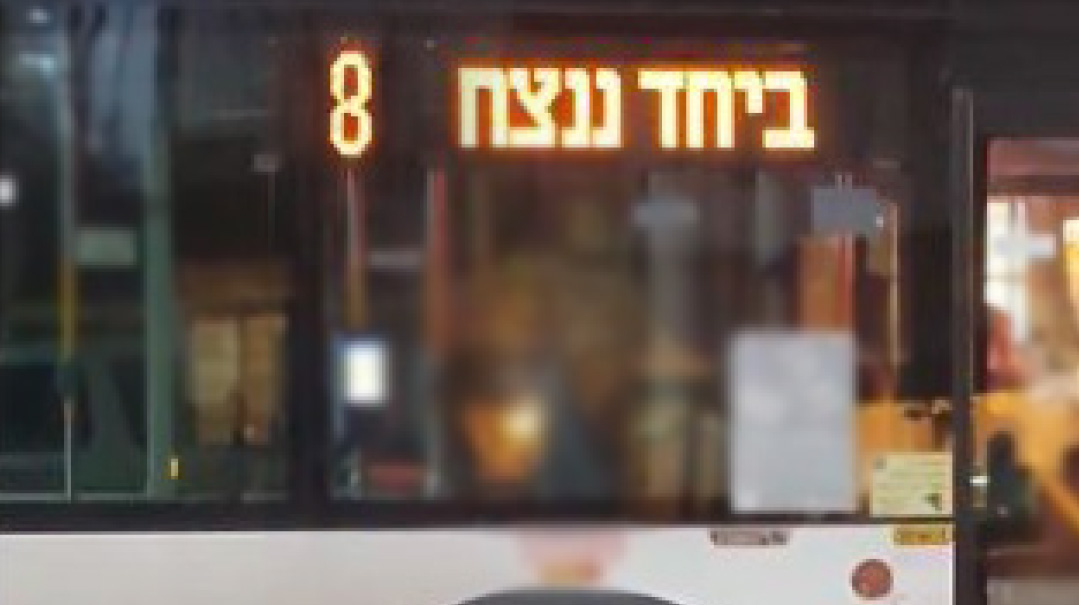Tefillat Margalit

The total absence of any barrier as a woman talks straight to her Maker

Last Monday, as we were checking off closed files on the magazine grid, an editor posted a video clip in the Mishpacha editors’ Slack forum.
“This is the mother of the soldier who was just freed. Video from yesterday,” she explained.
I’m sure many (most?) of you have seen that clip during the ensuing days. If you’re like me, you may have watched it several times — in admiration, in awe, in wonder, and maybe with a stab of longing.
The clip features Margalit Megidish, the mother of captive soldier Ori, who had been kidnapped from her post in the IDF observation base near the Gaza border on Simchas Torah morning. On this Sunday afternoon four weeks into her harrowing vigil, Margalit is standing behind a gray kitchen counter with a bowl of dough before her. A petite, red-nailed savta is hovering at her shoulder. Off to the side is a tray covered with multiple tea lights, all ablaze.
Margalit takes a handful of challah dough, wraps it in plastic, and draws in her breath. She makes the brachah, and then reads the words of an extended tefillah. Her voice starts out steady, but soon emotion begins to leak out with the tears. And may I perform this mitzvah again in good days… and may all the captives return, and the wounded recover…
Now, with the formal text completed, she raises her hands and her eyes and Part Two of her tefillah emerges, a monologue straight from the neshamah. Call it Tefillat Margalit.
First, she appeals to her deceased aunts up in Shamayim, openly sobbing: Do your part, move worlds from your posts up there. Then she addresses Hashem directly. “Borei Olam,” she pleads, “please, please, Borei Olam. I love you, I’m crazy over you, Borei Olam. Don’t let me down, please. B’meheirah b’meheirah b’meheirah…”
The women in the room chorus Amen and she puts down her hands. The clip ends.
I
took any number of classes and tests on tefillah throughout my school years. I’ve listened to shiurim and read many inspiring and instructive words on tefillah since. I’ve had moments — on Yom Kippur, outside an operating room, in an ambulance with sirens shrieking — when I can say I’ve really davened.
And I live in a country where people talk to Hashem all the time. In taxis stymied by traffic, on hiking trails, in the vegetable aisle of the grocery store — if you listen, you can hear Jews conferring with their Abba or screaming for Tatte or bargaining with HaKadosh Baruch Hu.
Still, I can’t stop replaying Margalit’s tefillah in my mind. (Just ask my kids; they will tell you their mother has been walking around muttering, “Ohevet Otcha, meitah Alecha, al te’achzev oti,” and then repeating, “How? How do you get there?”)
What is it about those two minutes and 44 seconds that won’t leave my mental screensaver?
Part of it is Margalit’s open profession of love for the One Who had allowed her daughter to be taken and Who would decide whether she’d return. That in itself is staggering. But there must be something more.
If anyone is seeking a lesson in what tefillah does — how it opens a pipeline so the pre-arranged yeshuah can make its way from Heaven down to earth — they can’t do any better than Tefillat Margalit. In the time lapse beginning with her uplifted arms and ending in the embrace of her daughter, you can literally see the pipeline opening and the salvation funneling down.
But another thing that tefillah does is connect. And that lesson is apparent even before Ori’s return. It’s there in the directness, the earnestness, the lack of pretense or artifice or gimmicks or flowery language. It’s in the disregard for cameras and crowds. The total absence of any barrier as a woman talks straight to her Maker. It’s that connection we recognize and crave for ourselves. I love you, Borei Olam, don’t let me down.
—Shoshana Friedman
Managing Editor
(Originally featured in Mishpacha, Issue 985)
Oops! We could not locate your form.



